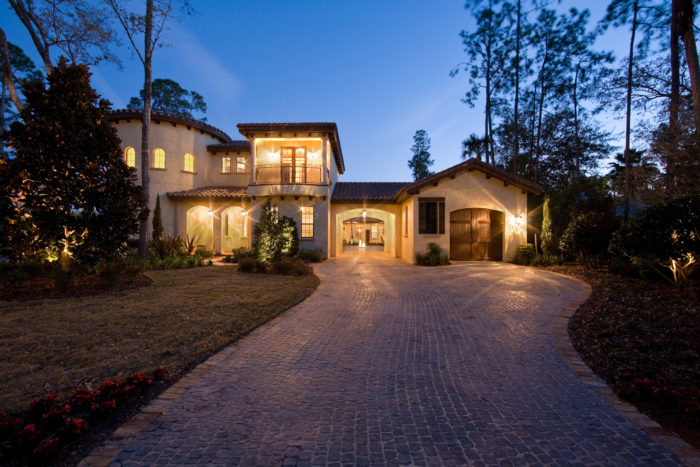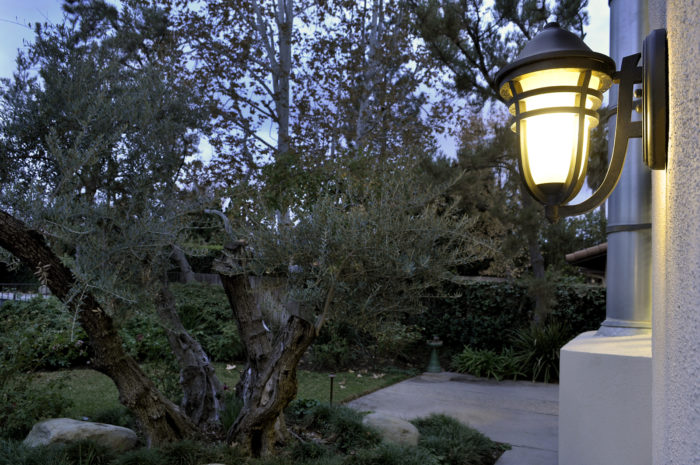If you are about to take on a lighting design project, note that there are safety hazards and concerns. Dark-sky and UL ratings have been set in place to counteract the harmful impact of lighting can have on the environment and people. Dark-sky is another term for light pollution. It is that cloudy artificial light viewed during the night, that makes the sky look like it is glowing. This is sky glow, an effect of light pollution. Luckily, Dark-sky ratings are there to reduce these effects. Another type of ratings system is UL Ratings. These ratings were created to protect society from the dangers of electrical devices. The UL, the laboratory that developed the standards and practices, is there to make sure that companies comply with those guidelines. While neither rating is mandatory, they exist to prevent or reduce the risks associated with lighting design.
Reasons for Dark-sky Ratings
Using poorly designed lighting fixtures is the major cause of dark-sky. In turn, the light pollution disrupts the ecosystem and the normal 24-hour cycle of human beings that starts from the time we get up until we sleep. Dark-sky ratings were created to reduce energy waste and eliminate negative effects unnatural light. Improper fixtures can cause “light trespass.” This occurs when light illuminates the adjacent property. Poor placement of lighting, carelessly positioning the lights upwards, or light bounced from reflective surfaces are culprits of light pollution. Additionally, some colors produced by lights are actually harmful to the environment, such as blue light. LEDs are one of the culprits of this harm because they produce a significant amount of blue light. Do not use colors that are over 3000 Kelvins. This means that warm lighting should be used instead. This color is amber, or yellowish-orange.
Reducing Light Pollution
Luckily, the effects of light pollution can be reversed. Install fully shielded lights and direct the light downwards, rather than uplight. As mentioned, LEDs contribute to light pollution. Opt for using low-spectrum LEDs instead. The great thing about these lights is that they are also energy efficient, which is great for the environment and your wallet. They reduce the amount of power used, cutting your electric bill. Turning on lights only when you need to, setting them on a timer, or using a motion sensor are other ways to reduce Dark-sky. Avoid having your lights to bright, just enough to navigate through the night. Buy outdoor bulbs that has low amounts of wattage for energy efficiency. Be mindful of light trespass and blinding glare, which can be dangerous to those driving by.
What are UL Ratings?
Guidelines were put in place by Underwriters Laboratories (UL) to help prevent fires and physical injury. UL is an independent safety certification organization that develops the standards and test products to make sure they follow the UL ratings. There are three different ratings – dry, damp, and wet. A dry rating would be labeled “UL Listed.” This means that lighting can only be used in dry areas, such as kitchens, living rooms, dining rooms, bedrooms, foyers, hallways, and most areas in the bathroom. These fixtures can only handle temporary dampness, at most, so long as there is adequate ventilation. When a fixture is labeled “Suitable for Damp Locations,” it can be used for both exterior and interior locations that are subject to moisture. They must be fully covered or shielded from the outdoor elements. Indoor pool areas, utility rooms, and bathtubs or showers, are examples of places appropriate for fixtures with damp ratings. Lastly, are fixtures that are made for wet locations. They are listed as “Suitable for Wet Locations.” These fixtures apply to both indoor and outdoor fixtures. No water can be near electrical components found in lighting fixtures and ceiling fans. Uncovered decks, patios, or porches are areas that must use damp fixtures.
Meeting UL Safety Standards
There are steps that manufacturers must complete before UL will issue a certification to them. First, the manufacturers submit their products to UL. To ensure the products are in compliance with the standards, the UL will test the products. Additionally, UL may even visit factories to confirm that the products they tested are the same as the ones on the assembly lines. Instructions are inspected to guarantee that safety precautions and other warnings are visible on the product. Consumers would not know how dangerous a product is otherwise if there were no labels. However, complying with the ratings system and guidelines isn’t mandatory. But because getting certified is expensive, many companies who can’t afford it will forego the process. Note that companies and consumers take on potential dangers linked to the product by not complying with the guidelines.
So, while failing to observe Dark-sky and UL ratings isn’t illegal, it is beneficial to the environment and our health. It takes little effort to eliminate or minimize the harms that both types of ratings were created to prevent. Proper lighting placement, directing lights down, and using the proper LEDs are easy tips to follow to prevent light pollution. UL ratings ensure that you and your surroundings are safe from the potential dangers of moisture on or in electrical components. So, it is best to comply with the standards and guidelines when doing your lighting design because why risk the harms when you can easily avoid them.




